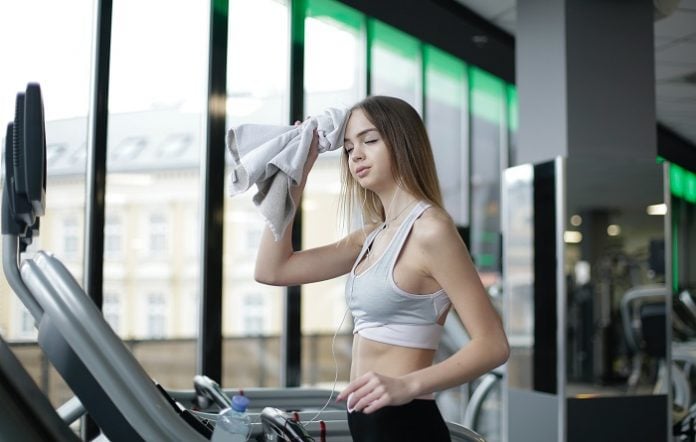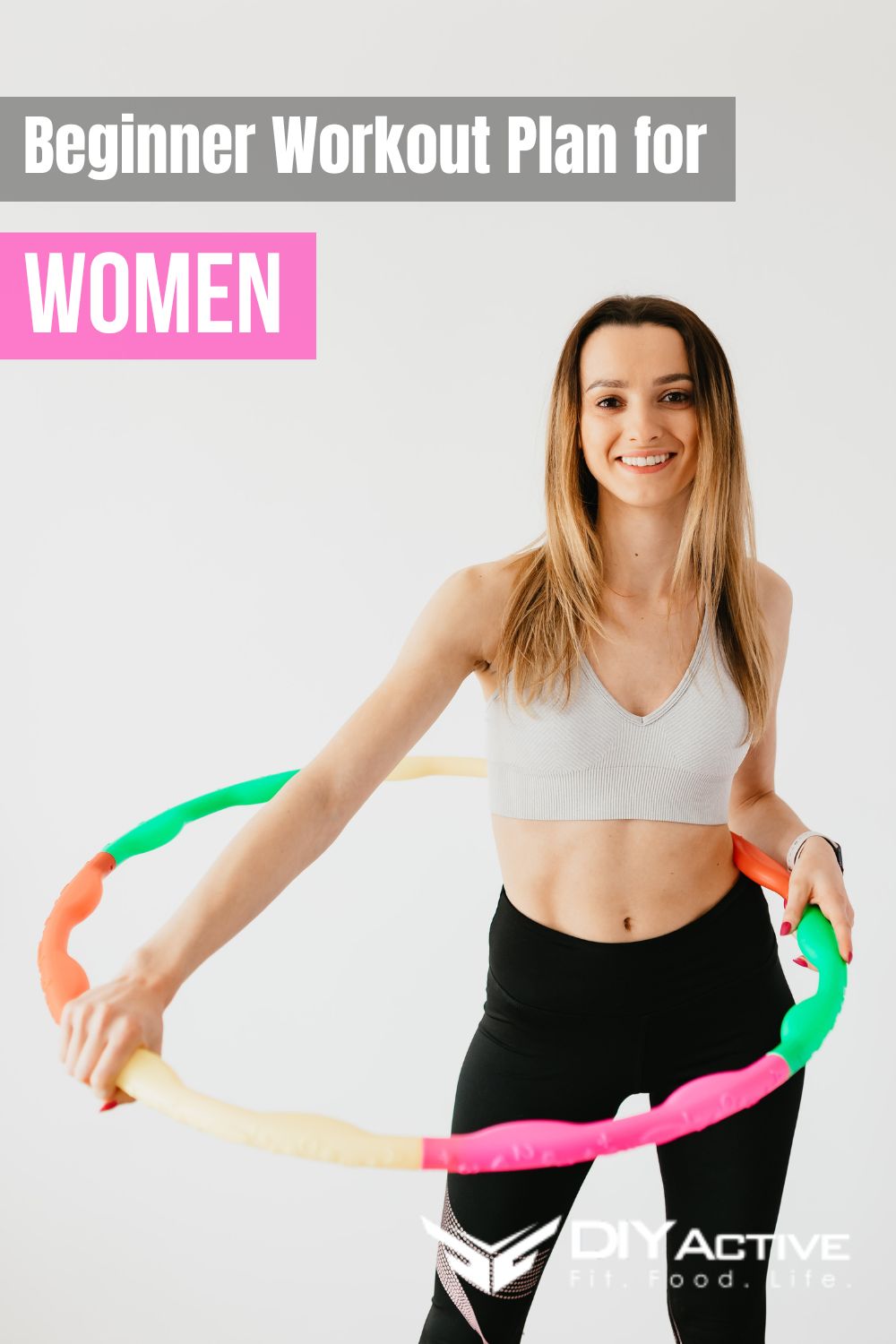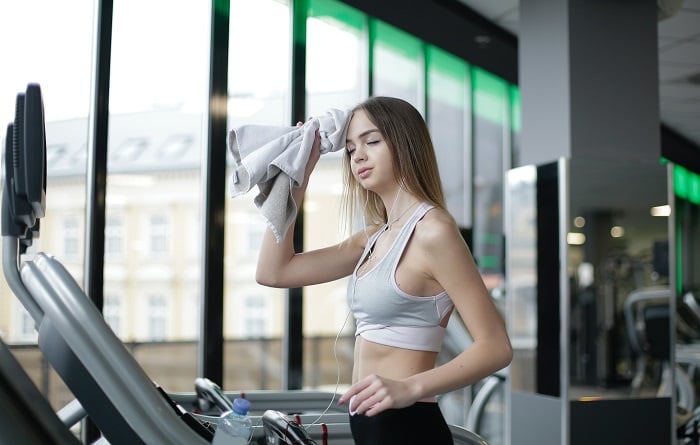Products You May Like

Building the proper workout plan for women isn’t as simple as copying what you see the Gym Bros doing and hoping for the best. There are major inherent differences when it comes to comparing how females should train versus how males should train.
Kind of Workout Training for Women
But before we explore why a workout plan for women should look different, we have to know what kind of training women should be doing in the first place.
Weight For It
Men and women alike should be spending the vast majority of their effort on resistance training. Cardio, yoga, and group classes may play a role in the grand scheme of your fitness lifestyle, but the biggest changes in your body composition will come from weight training.
This might seem counterproductive to achieving a “toned” or “curvy” physique that most women desire. But many women fail to realize that when they say this, they’re actually advocating for weight training already.
Achieving a “toned” physique is the result of improving your body composition. Your body composition is a function of the type of mass you carry, and the majority of that mass is either muscle mass or body fat mass.
In order to achieve a toned physique, one must reduce body fat. In order to achieve a curvy physique, one must gain muscle mass. Weight training is the most optimal way to achieve both.
Routine weight training will improve the way your body utilizes your nutrition, improve your hormonal profile, and increase your metabolism. All of these factors will lead to a sustained improvement in body composition.
Now that we know that strength training will be our primary tool to improve our physique, we have to understand how a workout plan for women will look different than one for men.
Embrace Your Estrogen
A major difference comes as a result of the female hormonal profile, with estrogen, in particular, having many implications on how women recover from training.
Women have much higher amounts of estrogen than men, which has a number of beneficial effects that include preventing the breakdown of muscle, aiding in muscle repair, and increasing metabolism.
This prevention of protein breakdown and protection against muscle damage means you’ll be recovered and ready for the next training session much sooner than your male counterparts.
Accordingly, your training frequency, or the total amount of days spent in the gym per week, can be as high as practically feasible since there’s a high likelihood you’ll be fully recovered in a short amount of time.
Obviously, the more frequently you can get in the gym leads to more muscle growth in targeted areas and a bigger boost to your chronic metabolism, which expedites your progress.
I Twitch, You Twitch, We Twitch
Another major difference is within the muscles themselves. Everybody has their own specific muscle fiber profile, which roughly breaks down into two categories: either “slow-twitch dominant” or “fast twitch dominant.”
Slow-twitch, Type-1 muscle fibers are better suited for less explosive, more sustained output. Fast-twitch, Type-2 muscle fibers are better suited for powerful movements lasting only a few seconds.
In general, females both carry more Type-1 fibers than men to begin with and preferentially develop these muscle fibers while resistance training.
This is a result of evolution; throughout history, women have traditionally been tasked with more endurance-type activities (think walking long distances while carrying babies, foraging, etc.).
This means females are more resistant to fatigue thanks to more Type-1 fibers. A workout program for women should include a higher volume of sets, higher reps per set, and shorter rest periods between sets to accommodate this.
Choose Wisely
Before selecting exercises, it’s worth noting that hypertrophy (muscle growth) is a local process, meaning the muscles you train the most, grow the most.
Many females don’t want bigger arms, but they want to emphasize their glutes and shoulders to evoke an “hourglass” figure. If this is your goal, then you would prioritize exercises that target these muscles, such as hip thrusts, wide-stance squats, and overhead presses and perform these exercises more often than any others.
While the idea of “spot reduction” for fat loss is a myth, “spot addition” via weight training is a very real phenomenon.
Beginner’s Luck
Keep in mind that as a beginner, the minimal effective dose will be enough to encourage substantial progress.
Training volume, or the total number of sets per week per body part, is the primary driver of results in the gym. Most research indicates that a total weekly volume of 12+ sets per week per body part tends to be the optimal prescription, with that number trending upwards as you become more advanced.
In addition to volume, frequency and intensity are both variables that should be manipulated at the beginner stage.
As previously discussed, the female hormonal and muscle fiber profiles allow for a very high-frequency approach, and many women can easily train every body part, every day. But as a beginner, you’ll want to ensure that you’re at least hitting your priority muscle groups (i.e. glutes, shoulders, etc.) more than once a week as a bare minimum.
Training intensity equates to the number of reps per set you complete, with similar hypertrophy seen in sets between 30% and 90% of your 1-rep max. This equates to sets totaling five to 30 reps. Females would be best served erring to the higher end of that range for optimal results, generally above 12 reps per set.
What Should My Routine Look Like?
In practice, women who are just beginning are best served training each body part that they want to grow with at least 12 sets per week. This volume should be split up into at least two sessions per week. It’s also advisable for females to rest about 60 seconds between sets.
Below, you’ll find a sample weekly training routine that accommodates the variables laid out above, with a focus on glutes, legs, and shoulders. Links to video demonstrations are included.
Photo by Andrea Piacquadio
Photo by Karolina Grabowska

